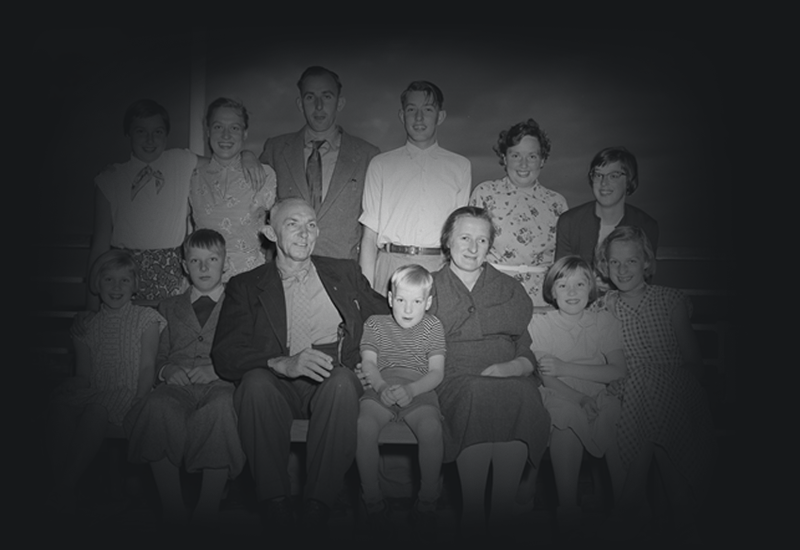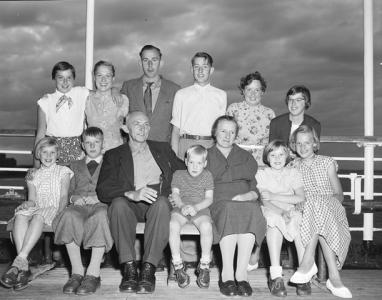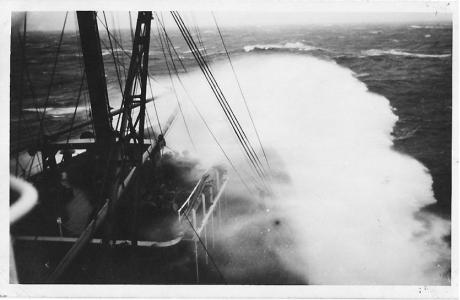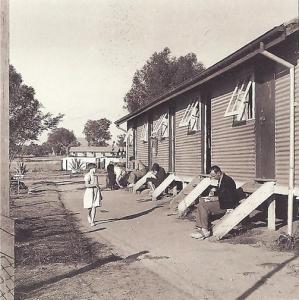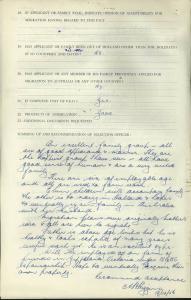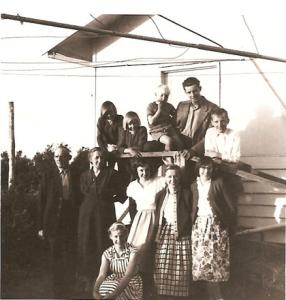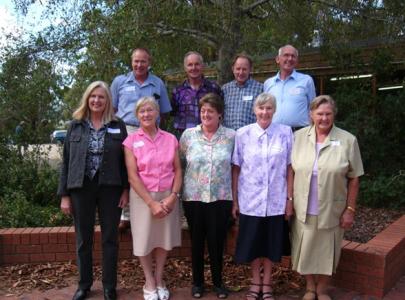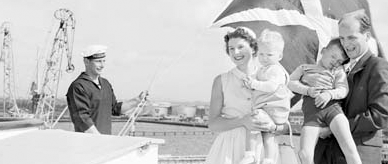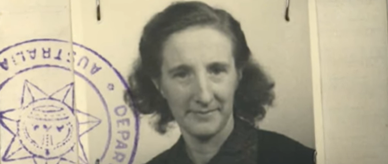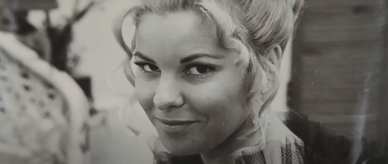Henk Wolswinkel, the youngest of 13 Wolswinkel children, boarded the Dutch migrant ship Johan van Oldenbarnevelt (JVO) in Amsterdam with his parents and 10 of his siblings in February 1957. Preparations for the trip had been extensive and the family was ready. But even the most organised migrants might leave something behind.
‘The night before we left, I’d been outside. We must have been saying goodbye to someone. We always had to leave our clogs at the back door, and I’d left them out’. Henk did not realise he had not collected his clogs until he was already aboard the JVO, so his clogs stayed behind.
Drama at sea
The family’s journey included some drama. Heading south past the Bay of Biscay, near Spain, the ship was damaged in a storm and docked in the Canary Islands for repairs to the hull. ‘Some things I’ll always remember,’ Henk says. ‘I’ll never lose them in my memory. There was a huge storm. We were sitting down at dinner. All of sudden you could see the whole floor moving and things were falling off tables and people were yelling.’
Passengers were ordered to put on their lifejackets and wait in their cabins. Unsurprisingly seasickness was almost unavoidable. ‘Everyone in my family got sick, except my brother Wilhelm,’ Henk says. ‘It was such a mess. You’d grab these paper bags. I couldn’t stand the sight or the smell of paper bags for many years after.’
After two nights the JVO continued on to Australia. ‘From Cape Town to Fremantle… well, that took ages. I was like a little kid in a car trip with Mum and Dad, saying "Are we there yet?", except it was "Is that land?". I just couldn’t wait to get my feet on land.’
When the Wolswinkel family finally arrived in Melbourne, they caused a stir in the media. They were the largest family on board the JVO, and featured in the Sun News-Pictorial.
Settling into a new life
Like many new arrivals, Bonegilla Migrant Reception and Training Centre was the Wolswinkel's first home in Australia, while they waited to be settled elsewhere. After a month they moved to Broadwater, in south western Victoria, where Henk's parents, Cornelis and Cornelia, and several of his older siblings were employed as farm workers.
After the noise of the ship and Bonegilla, Henk found the quietness of the country a stark contrast. ‘I remember waking up and it was so quiet, and then I would hear the magpies. It was such a beautiful noise, and whenever I hear magpies now, I am still taken back to that time.’
Fifty years after their arrival, the Wolswinkels held a family reunion in Gumbuya Park, Victoria, only a 90-minute drive from Broadwater. Henk and many of his siblings remain in regional Victoria, having their own farms and families.
Quotes from interview with Henk Wolswinkel, January 2012.

